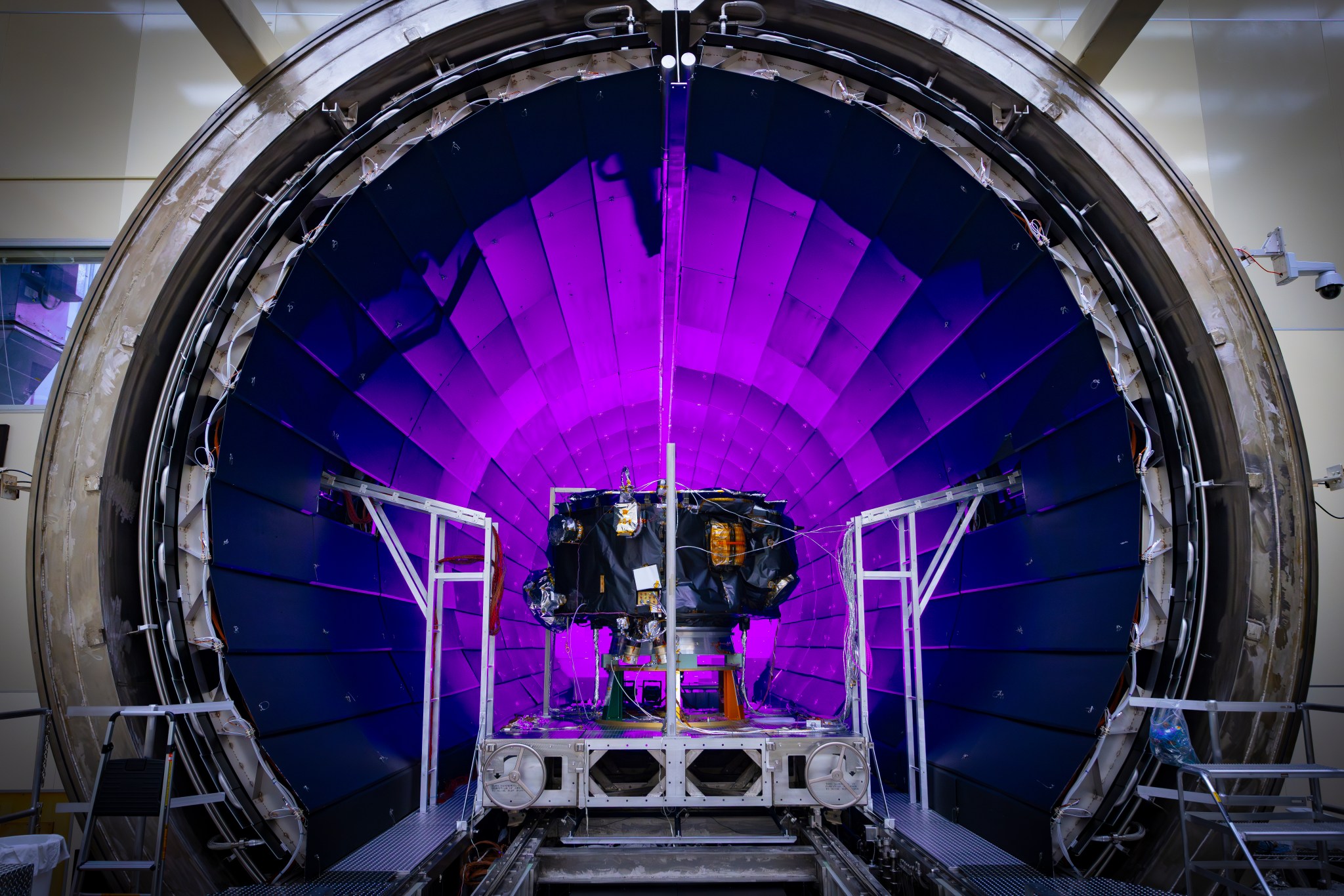Testing NASA’s IMAP (Interstellar Mapping and Acceleration Probe)
- NASA’s IMAP (Interstellar Mapping and Acceleration Probe) mission aims to map the solar system by studying the heliosphere, a giant bubble created by the Sun’s solar wind.
- The spacecraft will launch on a SpaceX Falcon 9 rocket from NASA’s Kennedy Space Center in Florida, no earlier than September 2025.
- Before launch, IMAP will undergo testing at NASA’s Marshall Space Flight Center in Huntsville, Alabama, including dramatic temperature changes to simulate space conditions.
- The mission is designed to study the heliosphere and protect our solar system from harmful interstellar radiation.
- The spacecraft will be loaded into a thermal vacuum chamber for testing, where it will undergo various environmental simulations before its launch.
NASA’s IMAP (Interstellar Mapping and Acceleration Probe) is loaded into the X-ray and Cryogenic Facility (XRCF) thermal vacuum chamber at NASA’s Marshall Space Flight Center in Huntsville, Alabama, in this photo from March 20, 2025. There, the spacecraft will undergo testing such as dramatic temperature changes to simulate the harsh environment of space.
The IMAP mission is a modern-day celestial cartographer that will map the solar system by studying the heliosphere, a giant bubble created by the Sun’s solar wind that surrounds our solar system and protects it from harmful interstellar radiation. The IMAP mission will launch on a SpaceX Falcon 9 rocket from NASA’s Kennedy Space Center in Florida, no earlier than September 2025.
Image credit: NASA/Johns Hopkins APL/Princeton/Ed Whitman
link
Q. What is NASA’s IMAP mission?
A. The IMAP mission is a modern-day celestial cartographer that will map the solar system by studying the heliosphere.
Q. What does the heliosphere do in relation to the solar system?
A. The heliosphere creates a giant bubble around our solar system, protecting it from harmful interstellar radiation.
Q. Where will the IMAP spacecraft launch from?
A. The IMAP spacecraft will launch on a SpaceX Falcon 9 rocket from NASA’s Kennedy Space Center in Florida.
Q. When is the IMAP mission scheduled to launch?
A. The IMAP mission is scheduled to launch no earlier than September 2025.
Q. What kind of testing will the IMAP spacecraft undergo before its launch?
A. The IMAP spacecraft will undergo dramatic temperature changes and other tests to simulate the harsh environment of space in the X-ray and Cryogenic Facility thermal vacuum chamber.
Q. Who are some of the institutions involved with the IMAP mission?
A. The IMAP mission is a collaboration between NASA, Johns Hopkins APL, Princeton University, and Ed Whitman.
Q. What will the IMAP spacecraft study to map the solar system?
A. The IMAP spacecraft will study the heliosphere to create a detailed map of the solar system.
Q. Why is it important to study the heliosphere?
A. Studying the heliosphere helps us understand the environment around our solar system and protects us from harmful interstellar radiation.
Q. What kind of rocket will carry the IMAP spacecraft into space?
A. The IMAP spacecraft will be carried into space on a SpaceX Falcon 9 rocket.
Q. Where is the X-ray and Cryogenic Facility thermal vacuum chamber located?
A. The X-ray and Cryogenic Facility thermal vacuum chamber is located at NASA’s Marshall Space Flight Center in Huntsville, Alabama.

